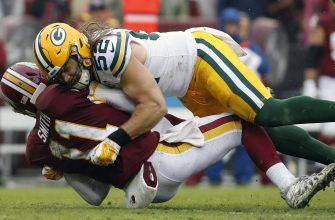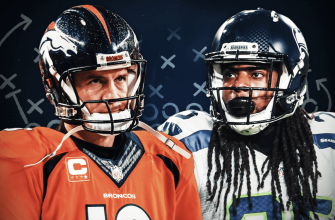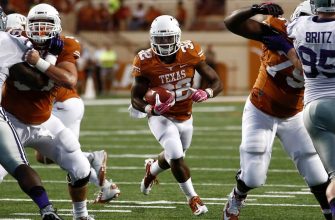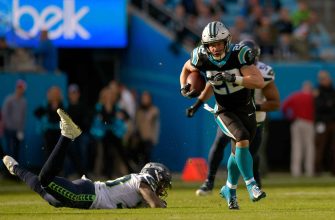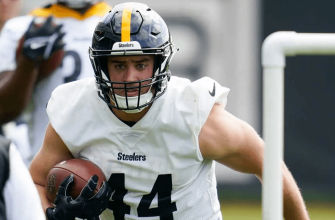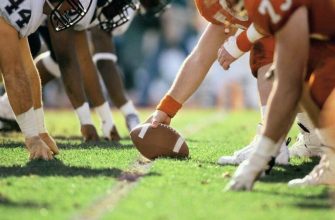Timeouts are an integral part of American football, allowing teams to stop the game clock and regroup. In the National Football League (NFL), each team is given a limited number of timeouts per half. Understanding how many timeouts are allowed and when they can be used is an important part of both offensive and defensive strategy.
This article will provide an overview of timeouts in the NFL, including how many are given, when they can be called, their duration, and key timeout rules and statistics. Proper timeout usage can make the difference between victory and defeat. Coaches must weigh carefully when to use them while also conserving enough to have available during critical late-game moments.
Total Number of Timeouts
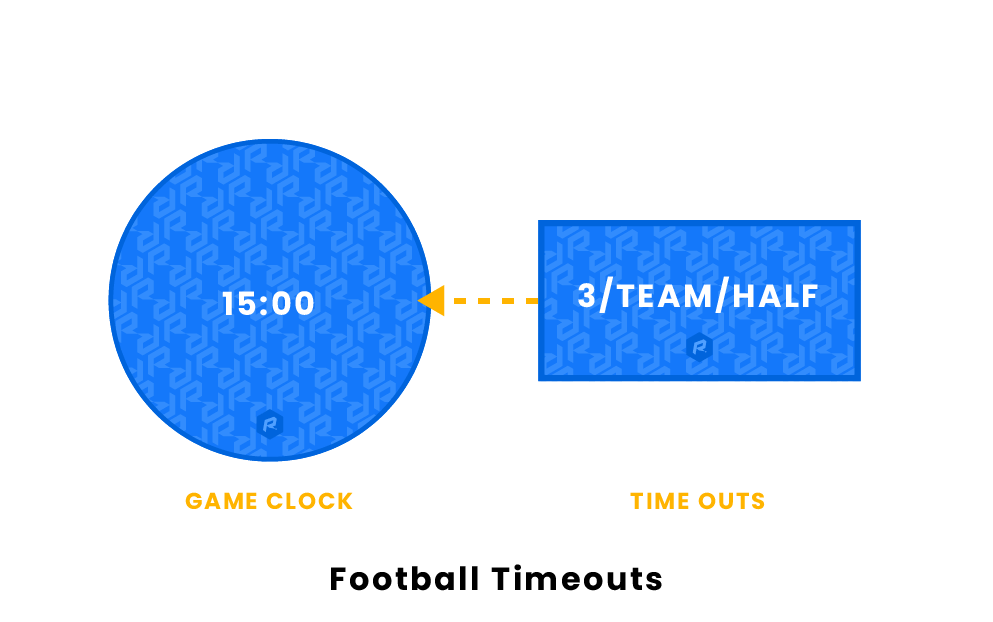
In the NFL, each team is allowed 3 timeouts per half during regulation play. This means there is a total of 6 timeouts allotted to each team for the entire game, for a grand total of 12 timeouts available between the two teams.
The timeouts reset for each half. Any unused timeouts do not carry over to the next half. If a team doesn’t use all 3 timeouts in the first half, they do not get extra timeouts in the second half. The allotment simply resets to 3 timeouts at the start of the 3rd quarter.
So in summary:
- Each team gets 3 timeouts per half
- Total of 6 timeouts per team per game
- Total of 12 timeouts for the entire game
- Timeouts reset to 3 at the start of the second half
When Timeouts Can Be Called

In the NFL, timeouts can be called by coaches or players at almost any point during the game. This flexibility allows teams to stop the clock and reassess strategy, personnel, or plays at critical moments.
Coaches typically call timeouts when their team needs to regroup during important drives or situational plays. For example, if the defense is scrambling to get set before a key third down, the coach may take a timeout to avoid a penalty or blown coverage. Coaches also use timeouts at the end of halves to stop the clock and get the ball back after the other team scores.
Players can call timeouts too if they feel the play clock is running down and the team needs more time to avoid a delay of game penalty. The quarterback frequently calls these timeouts just before the play clock expires. While players initiate the timeout, they are still deducted from the team’s total.
So in summary, timeouts provide flexibility for coaches and players to briefly pause the game when they feel it’s necessary. This helps teams maximize key situations throughout the contest.
Timeout Duration
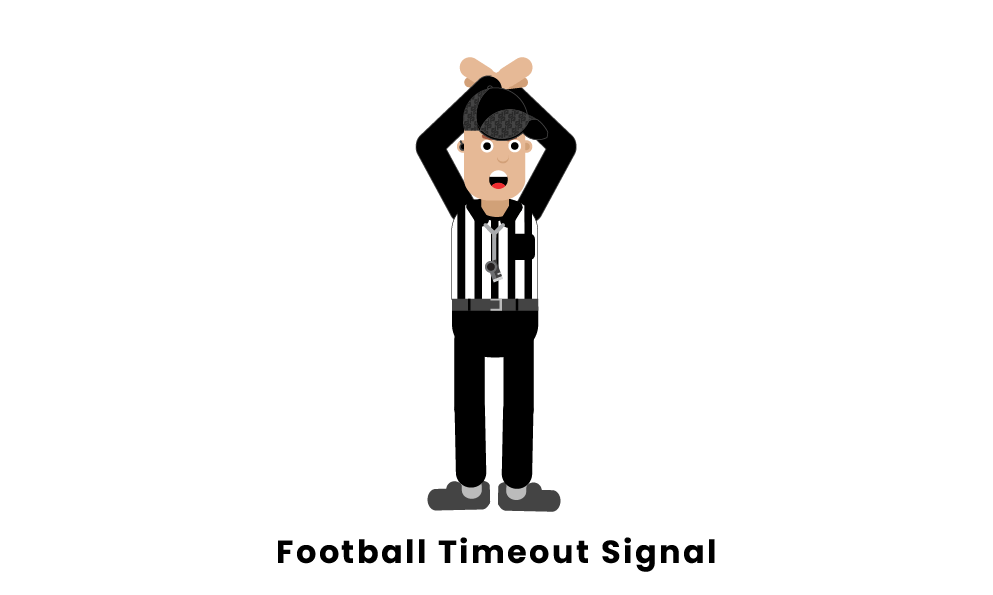
In the NFL, timeouts last for 1 minute and 50 seconds. This allows teams just under 2 minutes to huddle, strategize, and make substitutions before play resumes.
The duration of an NFL timeout is longer than timeouts in other major professional sports leagues. For comparison, the NBA grants teams 100 seconds (1 minute, 40 seconds), while MLB allows teams 120 seconds (2 minutes). The NHL is the only major sports league with a longer timeout duration at 130 seconds (2 minutes, 10 seconds).
The reason NFL timeouts are slightly longer is to provide ample time for making personnel changes, especially on defense where players may need to switch positions or assignments between plays. Offenses also benefit from the added 20-30 seconds to thoroughly evaluate the next play call or drive strategy.
Additionally, the nearly 2-minute NFL timeout works well for television broadcasts, giving networks extra time to air commercials and game promotions. The league has a vested interest in allowing advertisers these television timeouts without excessively disrupting the flow of gameplay.
So while an NFL timeout may seem long compared to everyday timescales, within professional sports it provides just enough time for teams to strategize and recalibrate, while facilitating television broadcasts. The duration strikes a balance between game operations and commercial opportunity.
Injury Timeouts
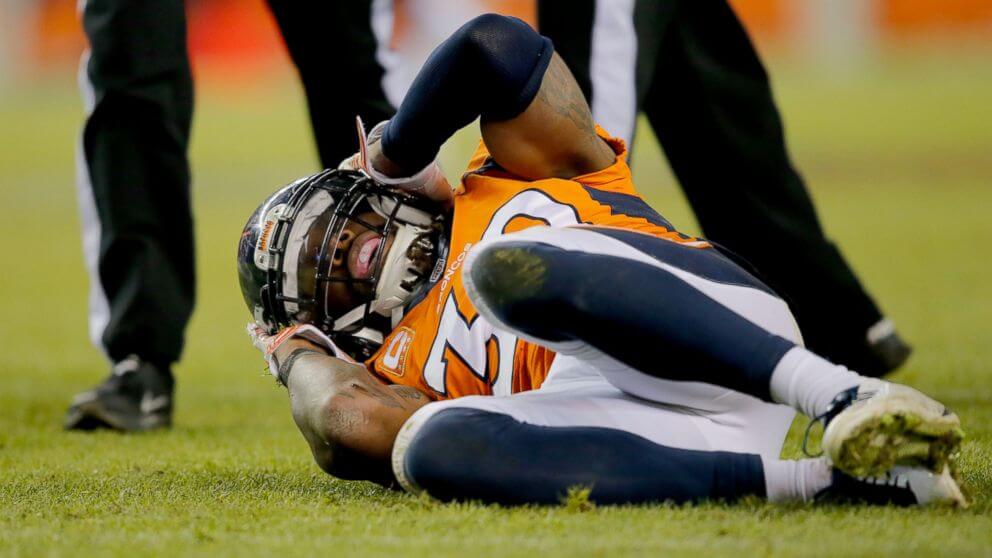
In the NFL, teams are allowed an unlimited number of injury timeouts over the course of a game. However, there is a catch – any player that is the reason for an injury timeout must sit out at least the next play. They are not allowed to return to the field for at least one down.
This rule is in place to prevent teams from faking injuries to stop the clock late in games. If there was no requirement for the “injured” player to miss time, teams could easily fake injuries to stop the clock and slow down their opponent’s momentum.
The NFL has a specific protocol for injury timeouts:
- If a player goes down with an injury, an official will stop the game clock and the injured player must leave the field for at least one down.
- The player can only return after sitting out a play if their team calls a timeout.
- If a timeout is called due to an injury in the final two minutes of a half, the injured player’s team will be charged with a timeout.
- If the injured player’s team is out of timeouts, they can still take an injury timeout but will incur a 5-yard penalty.
So in summary, while teams can stop the clock by faking injuries, it comes at the cost of losing that player for at least one play. This rule tries to balance player safety with preventing manipulation of the game clock.
Television Timeouts

In addition to regular team-called timeouts, there are scheduled television timeouts in NFL games. These are specifically for television broadcasts and commercial breaks.
The most common television timeouts occur at the two-minute warning in the first half and second half. When the game clock hits the two-minute mark, the referee will stop play and the networks will take a break to air commercials. This happens regardless of any activity on the field.
Television timeouts also happen after touchdowns, prior to extra point attempts, at the end of quarters, after change of possessions, and when a timeout is called inside of two minutes. Basically any natural break in the action of the game may prompt a television timeout.
These scheduled breaks allow the major TV networks like Fox, CBS, NBC and ESPN to get advertising time. The timeouts last 60-90 seconds for a set amount of national commercials.
Teams and coaches have to strategize around these television timeouts. The breaks allow teams to huddle and regroup but also cool down momentum. Overall, TV timeouts are just part of the modern NFL broadcast experience. Fans at home get commercials while players on the field get quick breaks in the action.
Timeout Strategies
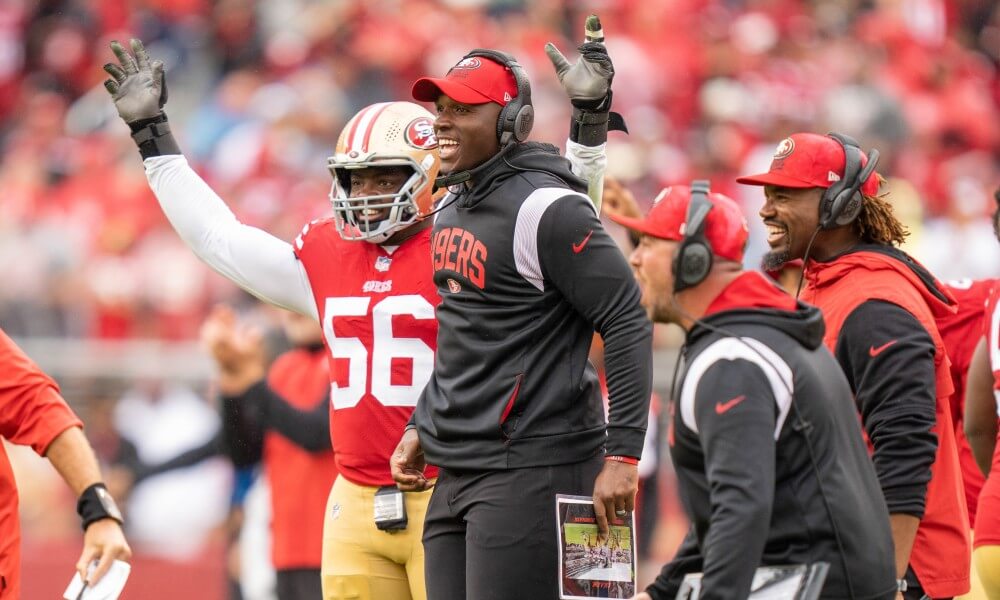
NFL coaches employ various strategies for using their limited timeouts over the course of a game.
Here are some of the most common timeout tactics in football:
- Save timeouts for late-game situations: Coaches aim to keep at least one timeout in reserve for critical late-game moments. Timeouts in the final minutes can be used to stop the clock, set up a final drive, or ice the kicker on a game-winning field goal attempt.
- Ice the kicker: “Icing the kicker” refers to calling a timeout right before the opposing kicker attempts a field goal. This tactic breaks the kicker’s concentration and routine right before the kick. However, research shows icing the kicker has questionable effectiveness.
- Challenge a call: Coaches can use a timeout to allow the replay booth to review a questionable call on the field. If the challenge is successful, the team gets its timeout back. But an unsuccessful challenge means that timeout is lost.
- Avoid delay of game: Coaches will call timeout to avoid their team getting penalized for delay of game as the play clock expires. Timeouts prevent this 5-yard penalty.
- Confuse the defense: Calling an unexpected timeout before a key play can confuse the defense. The offense might send out a unique personnel grouping or formation after the timeout.
- Stop momentum: Timeouts give teams a chance to regroup and slow down the other team’s momentum. For example, calling timeout after giving up a big play prevents the defense from staying on its heels.
- Buy time to set up a play: If the play clock is running down, offenses might use a timeout rather than rushing and risking miscommunication on the upcoming play.
- Get a breather: Timeouts provide a short break and time for coaches to game plan adjustments. Players can catch their breath and regroup during timeouts.
Timeout Penalties
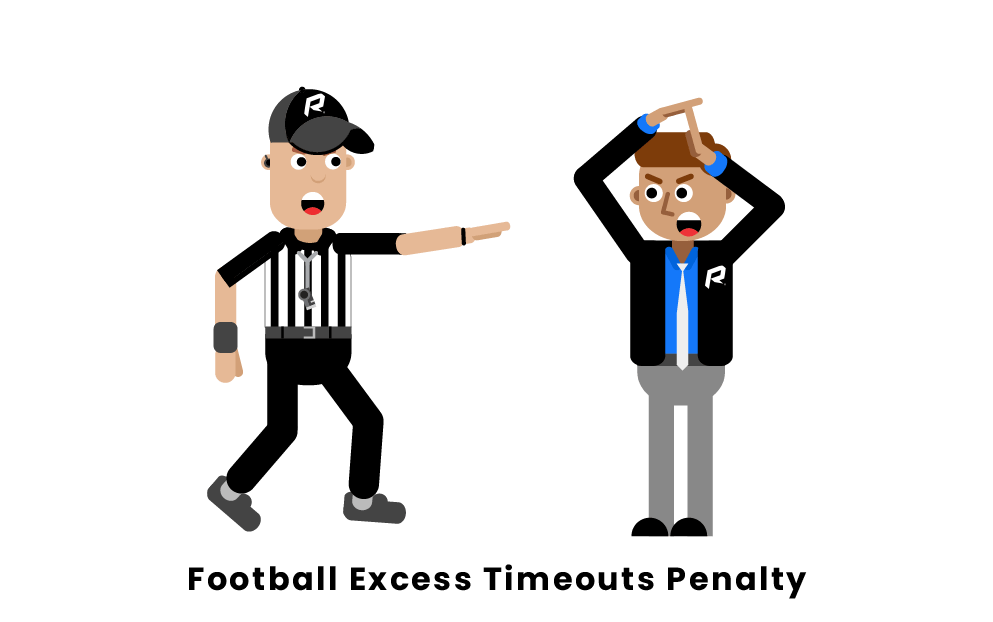
Calling a timeout at the wrong time can result in costly penalties for a team.
Here are some of the main ways timeouts can draw penalty flags:
Delay of Game
If the offense attempts to call a timeout when they have none left, they will be flagged for delay of game. This results in a 5-yard penalty. Teams cannot buy more time by trying to call extra timeouts.
The play clock is 40 seconds from the end of the previous play until the ball must be snapped. If the play clock expires before the ball is snapped, the offense is also charged with a delay of game penalty. However, teams are permitted to call a timeout before the play clock hits zero to avoid the penalty.
Illegal Timeouts
It is against the rules for the defense to call a timeout. Only the offensive team can stop the game clock by calling a timeout. If the defense signals or calls timeout, they will be flagged for an unsportsmanlike conduct penalty, resulting in a 5-yard penalty.
Defensive delay of game penalties can also be called if the defense is judged to be faking injuries to stop the clock or interrupt the offense’s momentum. Officials keep a close eye on this, as feigned injuries are considered unsportsmanlike.
In summary, teams must be smart and strategic in using their limited timeouts. Trying to stop the clock at the wrong time or in illegal ways can hurt a team with costly penalties. Knowing the rules is key to avoiding timeout penalties.
Timeout Statistics
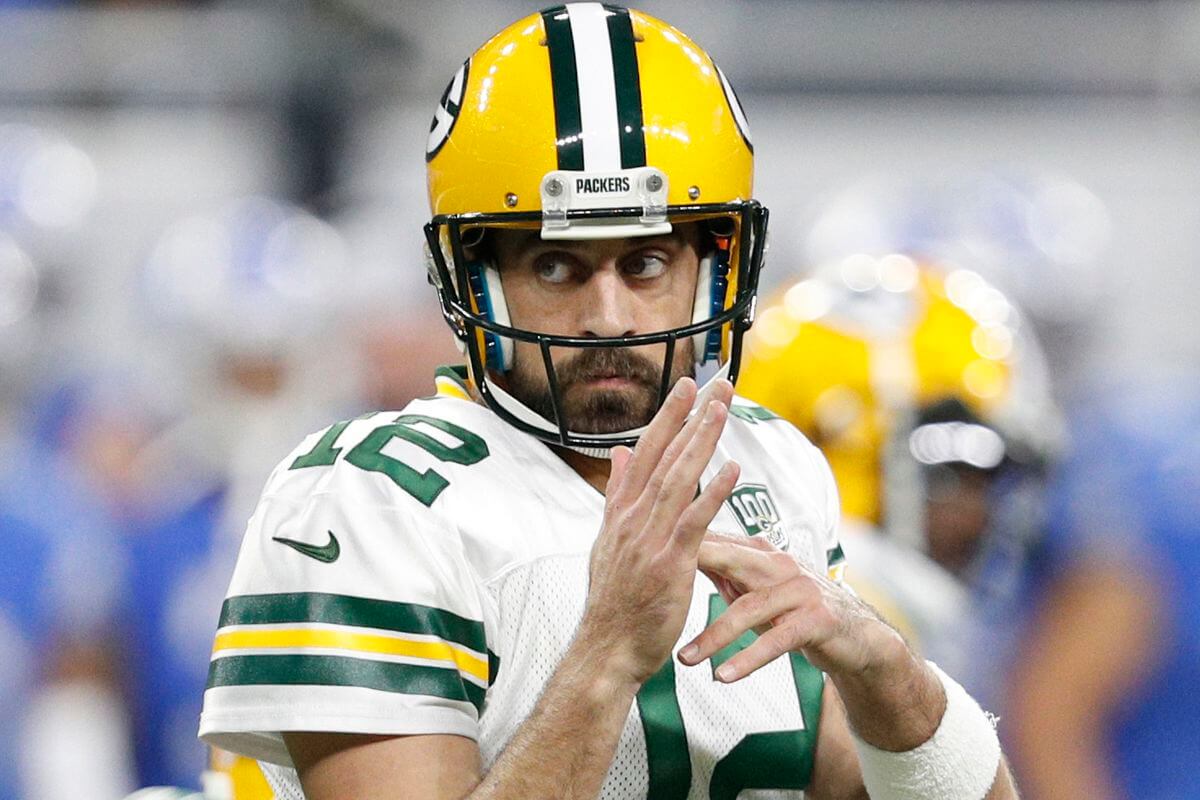
Timeouts are a crucial part of football strategy, allowing teams to stop the clock and re-group. On average in the NFL, teams use between 2-3 timeouts per game. According to statistics, offenses tend to call timeouts more frequently than defenses.
In 2020, NFL offenses called timeouts on 16.4% of plays while defenses called them on just 3.9% of plays. When offenses use timeouts, they are successful on the next play around 50% of the time. Defenses have a slightly higher success rate after calling timeouts at 54%.
The effectiveness of timeouts depends a lot on when they are used. Timeouts called in high leverage situations late in games see much higher success rates. Offenses convert 60% of the time and defenses 70% of the time on drives where a timeout is called in the last 2 minutes.
Coaches have to balance saving timeouts versus using them at critical moments. Teams that end up with unused timeouts at the end of halves consistently have lower win rates. Overall the data shows timeouts can provide a statistically significant boost for teams when called in the best high leverage situations.
Conclusion
The rules around timeouts in the NFL are an important strategic element of the game. Each team is allowed 3 timeouts per half that they can use to stop the game clock, regroup their team, or make key substitutions. These timeouts last for 60 seconds and can be called by head coaches or players on the field.
There are some key strategies teams utilize with timeouts, like calling them just before a big third down play or saving them until late in a half. Timeouts can’t be carried over, so teams look to use them wisely. The officials also stop the clock for injury timeouts, television timeouts, and various administrative stoppages. Teams are penalized if they improperly call for a timeout when they have none left.
Overall, understanding how to strategically use timeouts is a big part of success in the NFL. Coaches look to secure timeouts for critical late game situations while also using them throughout to aid their team. The limited number of timeouts creates another layer of strategy and intrigue in each NFL game.


